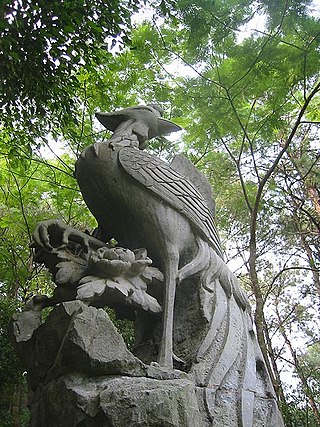
Fènghuáng are mythological birds found in Sinospheric mythology that reign over all other birds. The males were originally called fèng and the females huáng,but this distinction of gender is often no longer made and they are blurred into a single feminine entity so that the bird can be paired with the Chinese dragon,which is traditionally deemed male.

Chinese Opera is a form of theatre in China that combines singing,acting,and elaborate costumes. Topics are based on Chinese history,mythology,and literature. Over its historical evolution,it has incorporated various art forms such as music,song and dance,martial arts,acrobatics,costume and make-up art,and literature. It has highly formalized roles,performed by professional actors each trained for specific roles. Exaggerated features and colors make the roles easily identifiable.

Cantonese opera is one of the major categories in Chinese opera,originating in southern China's Guangdong Province. It is popular in Guangdong,Guangxi,Hong Kong,Macau and among Chinese communities in Southeast Asia. Like all versions of Chinese opera,it is a traditional Chinese art form,involving music,singing,martial arts,acrobatics,and acting.

Peking opera,or Beijing opera,is the most dominant form of Chinese opera,which combines music,vocal performance,mime,dance and acrobatics. It arose in Beijing in the mid-Qing dynasty (1644–1912) and became fully developed and recognized by the mid-19th century. The form was extremely popular in the Qing court and has come to be regarded as one of the cultural treasures of China. Major performance troupes are based in Beijing,Tianjin and Shanghai. The art form is also preserved in Taiwan,where it is also known as Guójù. It has also spread to other regions such as the United States and Japan.

Kunqu,also known as Kunju (崑劇),K'un-ch'ü,Kun opera or Kunqu Opera,is one of the oldest extant forms of Chinese opera. It evolved from a music style local to Kunshan,part of the Wu cultural area,and later came to dominate Chinese theater from the 16th to the 18th centuries. It has been listed as one of the Masterpieces of the Oral and Intangible Heritage of Humanity by UNESCO. Wei Liangfu refined the musical style of kunqu,and it gained widespread popularity when Liang Chenyu used the style in his drama Huansha ji. In 2006,it was listed on the first national intangible cultural heritage list. In 2008,it was included in the List of Representative Works of Intangible Cultural Heritage of Humanity. In December 2018,the General Office of the Ministry of Education announced that Peking University is the base for inheriting excellent traditional Chinese culture in Kunqu.

Imari ware is a Western term for a brightly-coloured style of Arita ware Japanese export porcelain made in the area of Arita,in the former Hizen Province,northwestern Kyūshū. They were exported to Europe in large quantities,especially between the second half of the 17th century and the first half of the 18th century.

Theatre of China has a long and complex history. Traditional Chinese theatre,generally in the form of Chinese opera,is musical in nature. Chinese theatre can trace its origin back a few millennia to ancient China,but the Chinese opera started to develop in the 12th century. Western forms like the spoken drama,western-style opera,and ballet did not arrive in China until the 20th century.

The Ravages of Time is an ongoing Hong Kong comics series created by Chan Mou. It re-tells the events in the late Han dynasty and Three Kingdoms period of Chinese history,with the story largely revolving around the many exploits of a young Sima Yi.

The arts of China have varied throughout its ancient history,divided into periods by the ruling dynasties of China and changing technology,but still containing a high degree of continuity. Different forms of art have been influenced by great philosophers,teachers,religious figures and even political leaders. The arrival of Buddhism and modern Western influence produced especially large changes. Chinese art encompasses fine arts,folk arts and performance arts.
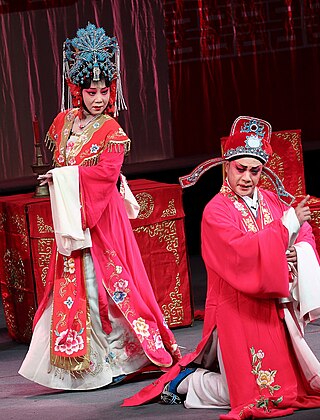
Yu opera,or Yuju opera,sometimes known as Henan bangzi,is one of China's famous national opera forms,alongside Peking opera,Yue opera,Huangmei opera and Pingju. Henan province is the origin of Yu opera. Henan's one-character abbreviation is "豫" (yù),and thus the opera style was officially named "豫剧" (Yùjù) after the founding of the People's Republic of China. The area where Yu opera is most commonly performed is in the region surrounding the Yellow River and Huai River. According to statistical figures,Yu opera was the leading opera genre in terms of the number of performers and troupes. While Yu opera is often called "Henan opera" in English,within Henan it is considered to be just one of the province's three most important forms of opera,the other two being Quju (曲剧) and Yuediao (越调).
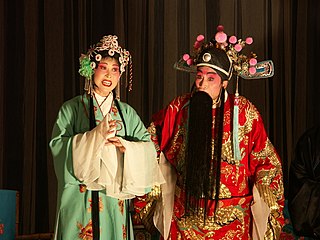
Sichuan opera is a type of Chinese opera originating in China's Sichuan province around 1700. Today's Sichuan opera is a relatively recent synthesis of 5 historic melodic styles. Regionally Chengdu remains to be the main home of Sichuan opera,while other influential locales include Chongqing,Guizhou,Yunnan,Hubei and Taiwan. Sichuan Opera was listed in the first batch of 518 national intangible cultural heritage list announced on May 20,2006.

Chinese culture attaches certain values to colors,like which colors are considered auspicious (吉利) or inauspicious (不利). The Chinese word for 'color' is yánsè (顏色). In Literary Chinese,the character 色more literally corresponds to 'color in the face' or 'emotion'. It was generally used alone and often implied sexual desire or desirability. During the Tang dynasty (618–907),the word yánsè came to mean 'all color'. A Chinese idiom meaning 'multi-colored',Wǔyánliùsè (五顏六色),can also refer to 'colors' in general.

Dancheong refers to Korean version of Chinese traditional decorative colouring (Danqing)on wooden buildings and artifacts for the purpose of style. It literally means "cinnabar and blue-green" in Chinese and in Korean,and is sometimes translated as "red and blue" in English. Along with its decorations and the choice of paint colours,Dancheong carries various symbolic meanings. It is based on five basic colours;blue (east),white (west),red (south),black (north),and yellow (center). The use of those five colours reflected the use of the yin and yang principle and the Philosophy of the five elements.
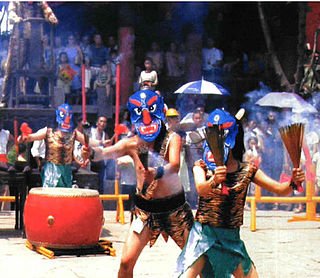
Nuo opera or Nuo drama is one of China's most popular folk operas. Characterized by its special features such as ferocious masks,unique dresses and adornments,the strange language used in performance,and mysterious scenes,Nuo opera has been selected as one of the non-material cultural legacies of China. The opera is a religious performance intrinsic to the culture of Nuoism,a type of Chinese folk religion. The purpose of Nuo opera is to drive away devils,disease and evil influences,and also to petition for blessings from the gods. Singing and dancing are included in Nuo opera and performers wear costumes and masks.
The Red Boat Opera Company was a group of traveling Cantonese opera singers who toured China in the late 1800s and early 1900s.
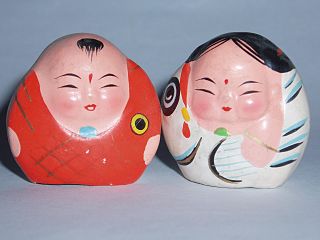
Huishan clay figurine is a traditional Chinese folk art in Wuxi,Jiangsu Province,China,with a history of more than 400 years. The production of Wuxi Huishan clay figurines began at the end of the Ming dynasty and developed in the Qing dynasty with specialized Huishan clay craftsmanship workshops. On May 20,2006,Huishan clay figurine was added to the first batch of National intangible cultural heritage lists with the approval of the State Council of the People's Republic of China.
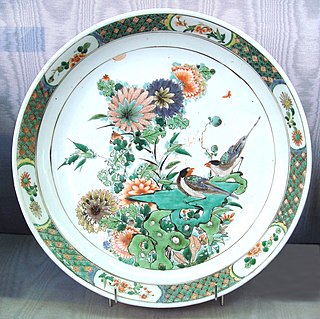
China painting,or porcelain painting,is the decoration of glazed porcelain objects such as plates,bowls,vases or statues. The body of the object may be hard-paste porcelain,developed in China in the 7th or 8th century,or soft-paste porcelain,developed in 18th-century Europe. The broader term ceramic painting includes painted decoration on lead-glazed earthenware such as creamware or tin-glazed pottery such as maiolica or faience.
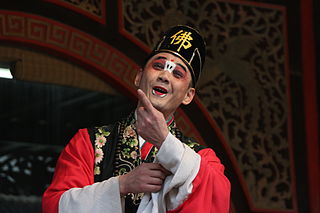
The Chou is the clown role in Chinese opera. The Chou usually plays secondary roles in a troupe.
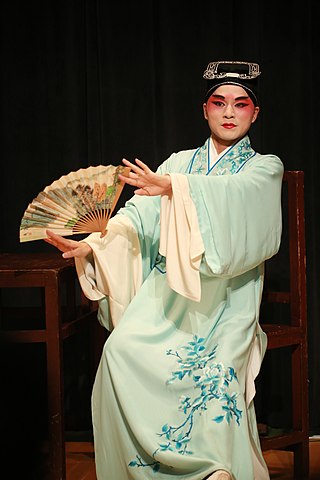
The xiaosheng is a male role type in Chinese opera and a subtype of the sheng. Most xiaosheng characters are young Confucian scholars or,less often,young warriors.

Xifu,also known as Chinese opera costume in English,are the stage clothes and attire worn in Chinese opera,such as Kunqu,Cantonese opera,Beijing opera,Huangmei opera. Some of these costumes bear some resemblance to the Hanfu system but also show some differences in terms of clothing ornaments and decorations,as well as colour system,and in design and construction. In 2006,the techniques used to produce Beijing opera costumes were included in the national intangible cultural heritage list.



















